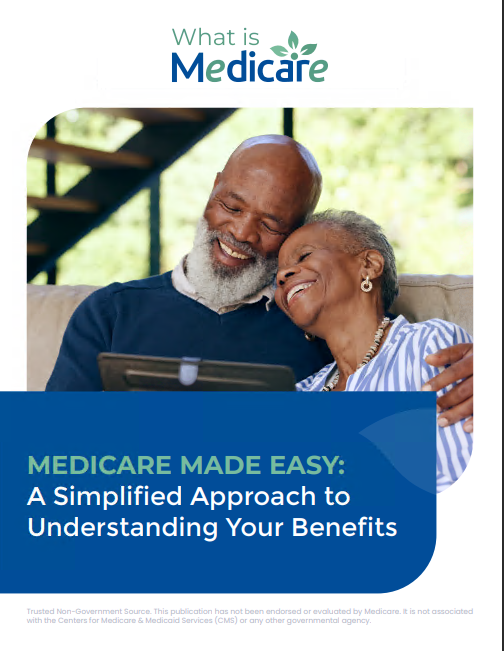Key Takeaways:
- Skipping Medicare enrollment when you’re first eligible could cost you big time in penalties and delays in coverage.
- Understanding the different enrollment periods is key to avoiding unnecessary headaches and unexpected costs.
Why Skipping Medicare Enrollment Could Be a Costly Mistake
Let’s face it, Medicare can be confusing. You might be thinking about skipping Medicare enrollment when you’re first eligible—whether because you’re still working, have private insurance, or just want to avoid dealing with all the paperwork right now. But before you make that decision, it’s crucial to understand the potential pitfalls that can come with delaying your enrollment. Spoiler alert: they could affect your wallet and your access to healthcare down the road.
The Different Medicare Enrollment Periods—What Do They Mean?
Understanding when you can (and should) enroll in Medicare is crucial. Miss your chance, and you might not only face penalties but could also be left without coverage for months. So, let’s break down the main enrollment periods and what they mean for you.
1. Initial Enrollment Period (IEP): Your First Shot
This is your golden ticket—your first chance to enroll in Medicare without any penalties. Your Initial Enrollment Period starts three months before your 65th birthday, includes your birthday month, and continues for three months afterward. So, in total, you get seven months to sign up.
If you miss this window, things start to get tricky. You could face delayed coverage or have to wait until the next enrollment period to sign up. And the longer you wait, the more likely you’ll end up paying late penalties.
2. General Enrollment Period (GEP): The Backup Plan
Let’s say your Initial Enrollment Period came and went, and for whatever reason, you didn’t sign up. Your next chance to enroll is the General Enrollment Period, which runs from January 1st to March 31st each year. Sounds good, right? Well, there’s a catch. If you enroll during this period, your Medicare coverage won’t start until July 1st, which could leave you without health coverage for several months.
Not only that, but if you’ve delayed signing up for Medicare Part B (which covers doctor visits and outpatient care) or Part D (prescription drug coverage), you might face a late enrollment penalty. And here’s the kicker: these penalties stick with you for as long as you have Medicare.
3. Special Enrollment Period (SEP): Exceptions to the Rule
Life happens, and sometimes circumstances beyond your control might prevent you from enrolling during your IEP or GEP. Maybe you’re still working and have employer-provided insurance, or you lose coverage due to a life event. That’s where the Special Enrollment Period comes in.
If you qualify for SEP, you can enroll in Medicare outside the regular periods without penalty. But don’t assume that you automatically qualify for SEP—you’ll need to meet certain conditions, such as losing employer coverage or moving to a new area where your plan doesn’t offer services.
4. Open Enrollment Period (OEP): Tweaking Your Plan
Already enrolled but thinking of making a change? The Open Enrollment Period runs from October 15th to December 7th each year. This is the time when you can switch between Original Medicare and Medicare Advantage, or change your Part D plan. Whatever changes you make will kick in on January 1st of the following year.
If you miss this period, you’re generally stuck with your current coverage for the next year unless you qualify for a Special Enrollment Period.
5. Medicare Advantage Open Enrollment Period (MA OEP): One Last Chance for Advantage Plan Members
If you have a Medicare Advantage plan and want to switch or drop it, the Medicare Advantage Open Enrollment Period is your final opportunity. This runs from January 1st to March 31st each year, and during this time, you can either switch to a different Medicare Advantage plan or go back to Original Medicare.
But be aware: you can only make one change during this period. Once you switch, you’re locked in for the year, so choose wisely.
Penalties: The Price You Pay for Delaying Medicare
We’ve mentioned penalties a few times, but let’s dig into what that really means for you. The late enrollment penalty is one of the most significant consequences of skipping Medicare enrollment. And unfortunately, it’s not just a one-time fee—it sticks with you for life.
Part B Late Enrollment Penalty
If you don’t sign up for Medicare Part B when you’re first eligible, you’ll likely face a penalty. The penalty is calculated based on how long you went without Part B coverage after you were first eligible. For each 12-month period you delay signing up, your monthly premium will go up by 10%. So, if you wait two years, that’s a 20% increase in your monthly premium—forever.
Part D Late Enrollment Penalty
Skipping Medicare Part D (prescription drug coverage) when you’re first eligible can also result in a penalty. For every month you go without creditable prescription drug coverage, you’ll pay an extra 1% of the “national base beneficiary premium” for Part D. Like the Part B penalty, this surcharge sticks with you for as long as you have Medicare.
Working Past 65? Here’s What You Should Know
You might be thinking, “I’m still working, and I’ve got great health insurance through my job, so I’ll just skip Medicare for now.” While that can be a valid option, there are a few things to consider.
If your employer has fewer than 20 employees, Medicare becomes your primary insurance once you turn 65. That means your employer’s insurance will only pay after Medicare pays its share. If you don’t enroll in Medicare, you could be left with huge out-of-pocket costs.
On the other hand, if your employer has more than 20 employees, your group health insurance can remain your primary coverage, and you can delay enrolling in Medicare without penalty. Just make sure you have proof of creditable coverage for when you eventually sign up to avoid the Part B or Part D late enrollment penalties.
Changing Your Plan During Open Enrollment
If you’re already enrolled in Medicare but aren’t happy with your current plan, the Open Enrollment Period (October 15th to December 7th) is your chance to make changes. Whether you want to switch from Original Medicare to a Medicare Advantage plan, or simply change your Part D plan, this is the time to do it.
But remember, any changes you make during this window will take effect on January 1st of the following year, so don’t expect instant results. Also, if you’re considering a switch, it’s worth doing some research to ensure that your new plan meets your needs for the year ahead.
When Can You Make Changes Outside of OEP?
What if something in your life changes outside of the typical enrollment periods? That’s where the Special Enrollment Period (SEP) comes into play. You can qualify for SEP in a few different scenarios, such as:
- Losing employer or union health coverage
- Moving out of your plan’s service area
- Moving into or out of a long-term care facility
- Qualifying for Extra Help (a program for low-income individuals)
If any of these apply to you, you can make changes to your Medicare plan without waiting for the next OEP.
Don’t Let Medicare Penalties Sneak Up on You
Skipping Medicare enrollment when you’re first eligible might seem like a tempting option, especially if you’re still working or covered by another plan. But trust me—ignoring those deadlines can come back to bite you. From costly penalties to gaps in coverage, the risks simply aren’t worth it.
So take the time to figure out which enrollment period applies to you, and make sure you don’t miss your chance. A little planning now can save you from a whole lot of hassle later.
The Key to Medicare Success: Know Your Deadlines and Options
Navigating Medicare can feel overwhelming, but understanding the different enrollment periods is the first step to making sure you get the coverage you need—without the penalties. Whether you’re nearing your 65th birthday or considering changes during Open Enrollment, knowing your options and deadlines is essential to making the best decision for your healthcare.










